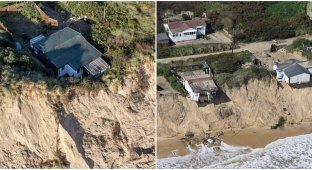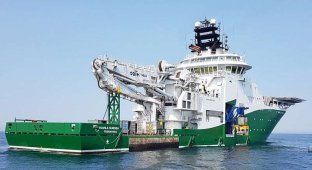Alexandria Is Going Underwater Due to Climate Change (5 photos)
From its founding by Alexander the Great to the birth of Cleopatra, this ancient city has been the scene of some of history's most significant events. But now scientists are warning that Alexandria is under threat from rising sea levels. 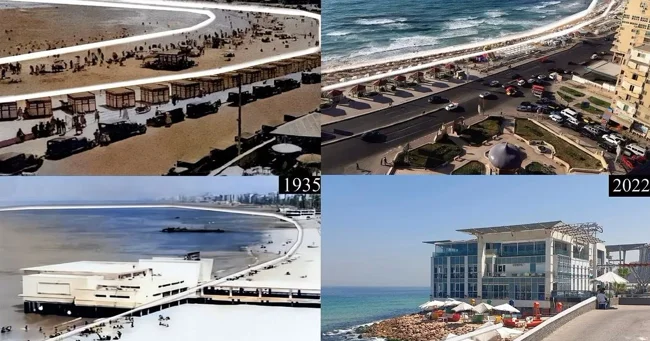
Building collapses are on the rise in the 2,300-year-old port city, which was once home to two of the world's greatest monuments, the Library of Alexandria and the Lighthouse of Alexandria.
The number of collapses has increased from one per year to an “alarming” 40 as saltwater seeps deeper. In the past two decades, 280 buildings have been destroyed by coastal erosion, and another 7,000 are at risk of collapse.
Sarah Fouad, lead author of the study and a landscape architect at the Technical University of Munich, said: “For centuries, Alexandria’s structures were true masterpieces of engineering, withstanding earthquakes, storm surges, tsunamis and more. But now rising sea levels and more intense storms, driven by climate change, are destroying in a matter of decades what took millennia of human ingenuity to build.” 
Founded by Alexander the Great in 331 BC, Alexandria was once the largest city on Earth and an important hub for trade and shipping, connecting the Middle East and Europe. However, the proximity to water that once brought prosperity now threatens to destroy it.
As greenhouse gases increase, the planet warms, which in turn leads to higher average ocean temperatures. When water warms, it expands. This expansion, along with fresh water coming from rapidly melting ice caps, is causing sea levels to rise.
Since 1880, sea levels have risen between 20 and 23 centimeters, with 10 centimeters rising since 1993 alone, according to the National Oceanic and Atmospheric Administration (NOAA). 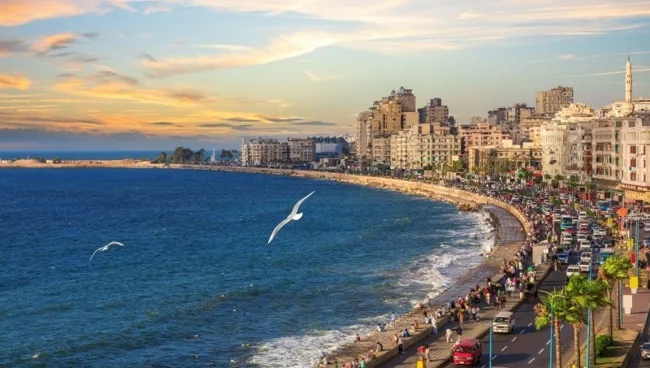
A recent study from Nanyang Technological University (NTU), Singapore, predicts that sea levels could rise by 1.9 meters by 2100.
Scientists combined satellite images with historical maps to determine the rising sea levels. It turns out that the Alexandria coastline has retreated by tens of meters, with some areas losing 3.6 meters per year.
Essam Heggie, a water resources specialist at the University of Southern California, says: “Our study disproves the common misconception that we should only worry when sea levels rise by a meter.” 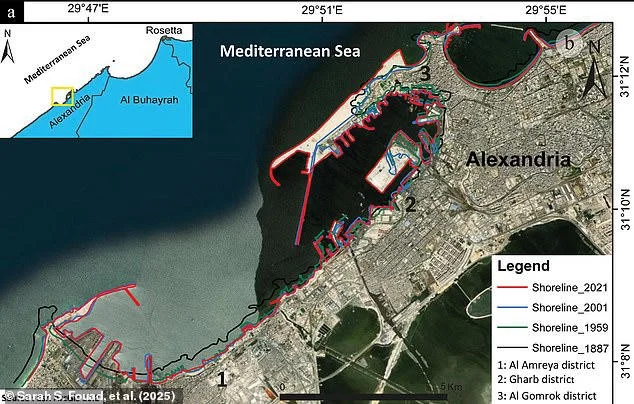
The coastline has retreated tens of meters from its position in the 1880s (shown in black) to today's level (shown in red)
A rise in sea levels of just a few centimeters increases the risk of flooding and allows saltwater to penetrate deeper into coastal areas.
Researchers took soil samples from different areas of the city. Isotopic analysis showed that buildings are collapsing from the bottom up as seawater intrusion damages foundations and weakens the soil. This has led to the collapse of hundreds of buildings located more than a kilometer from the coastline. 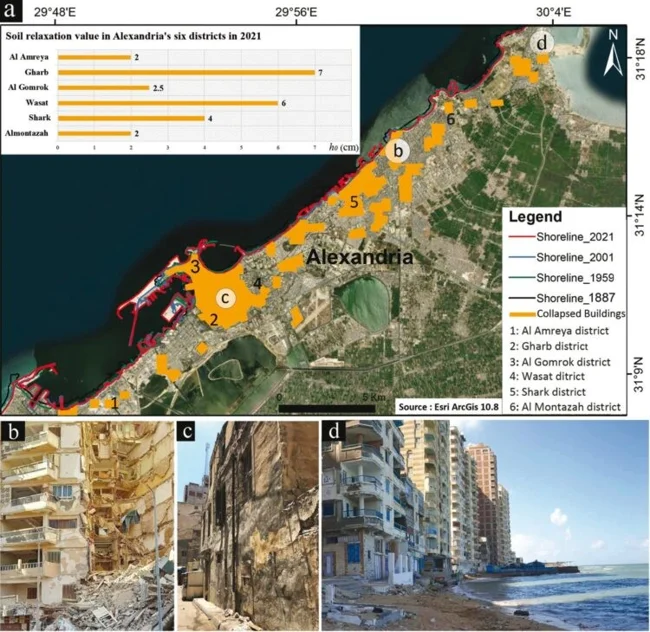
The orange areas show areas where buildings have collapsed. Chemical analysis has shown that saltwater intrusion has caused soil erosion
This problem is not unique to Alexandria and could affect coastal cities around the world. Some areas of California, including San Francisco, are sinking faster than the sea level itself is rising.
Experts have suggested a number of possible solutions to address these issues, including building sand dunes along the coast, raising buildings, or relocating people from the most vulnerable areas.















